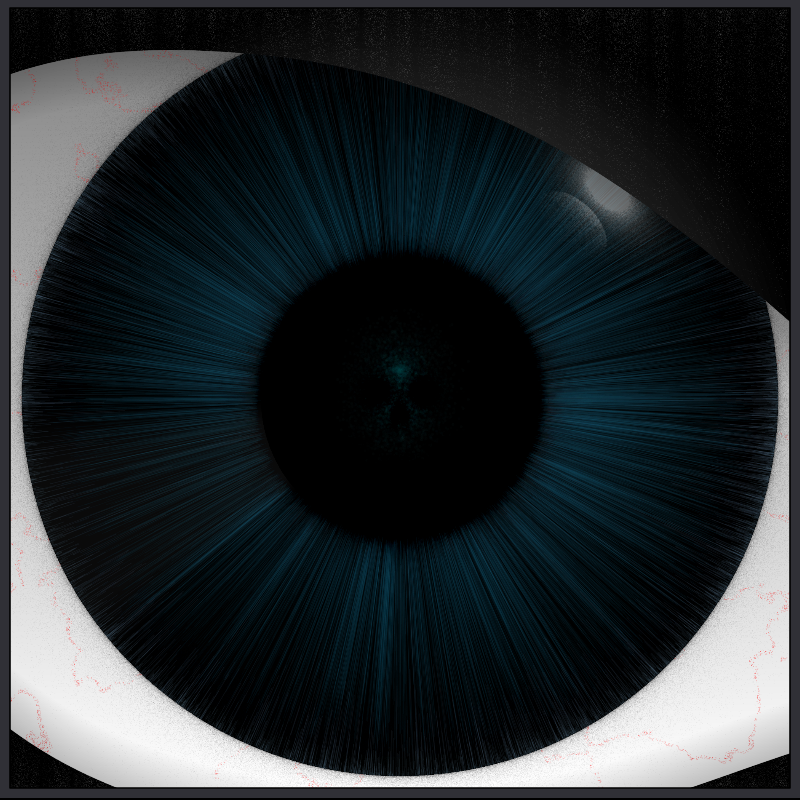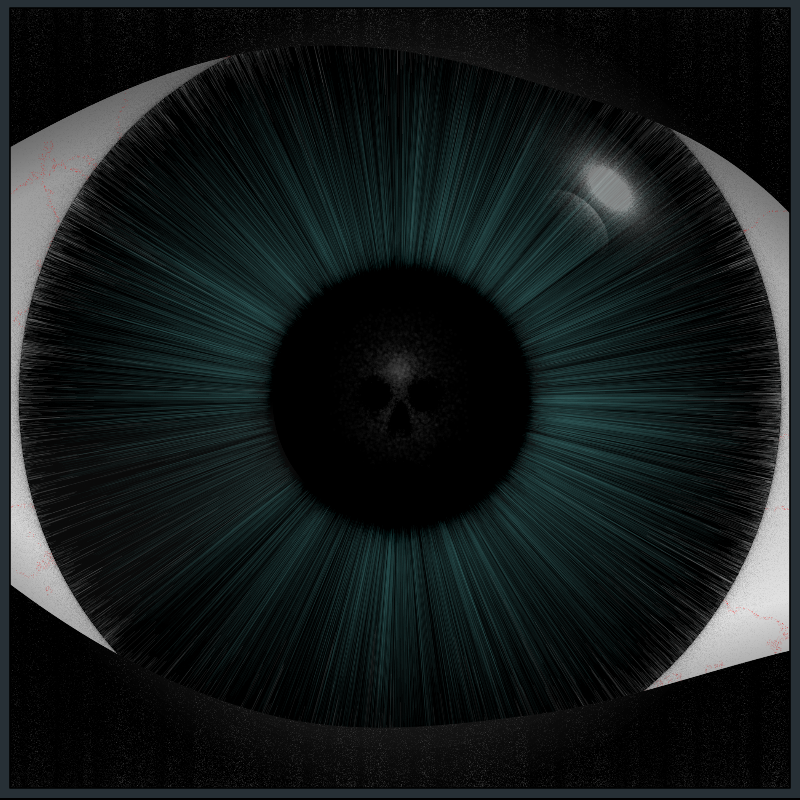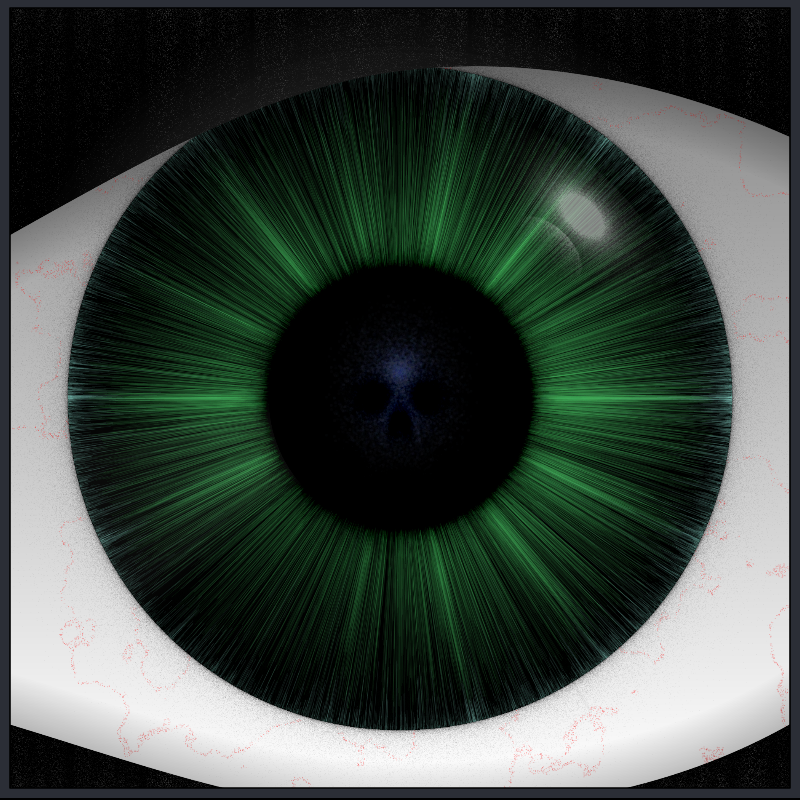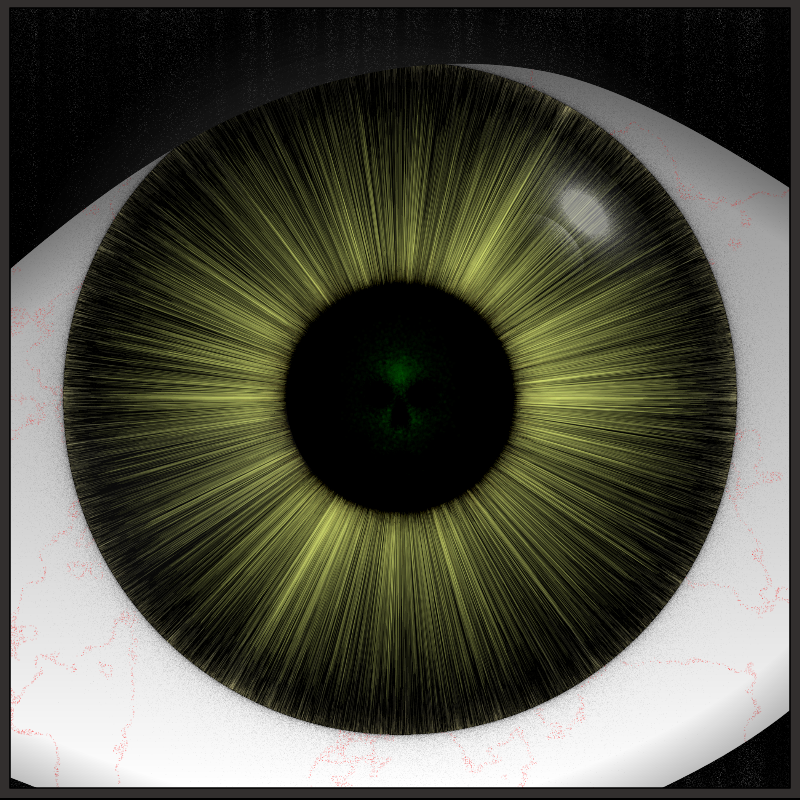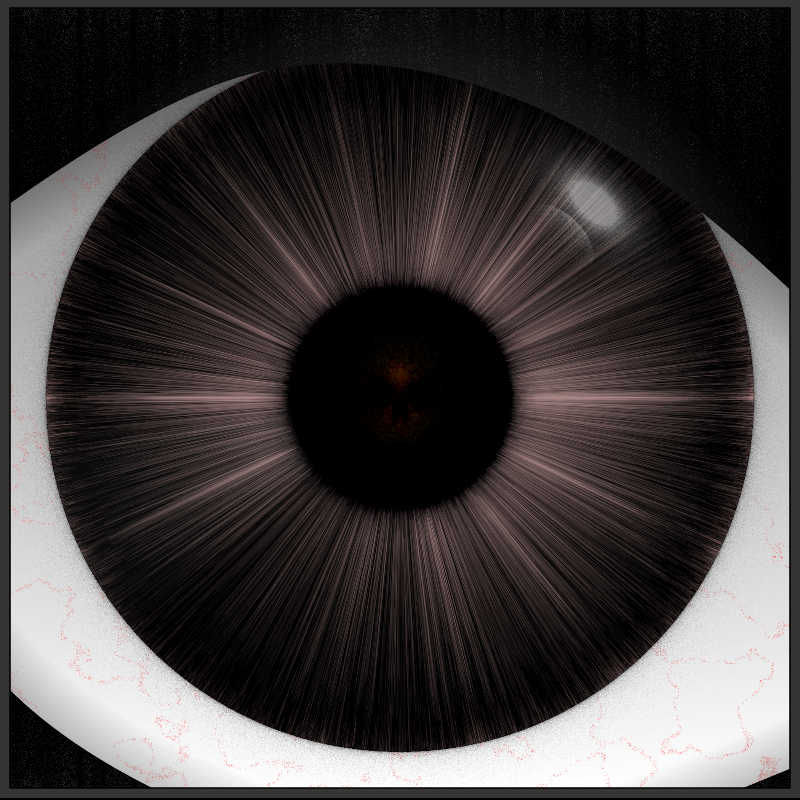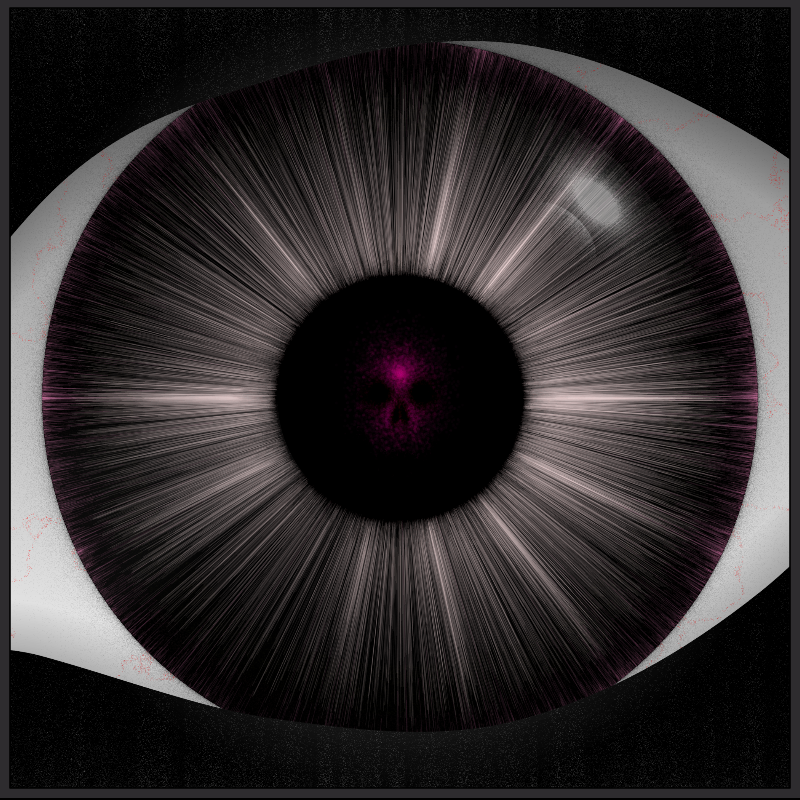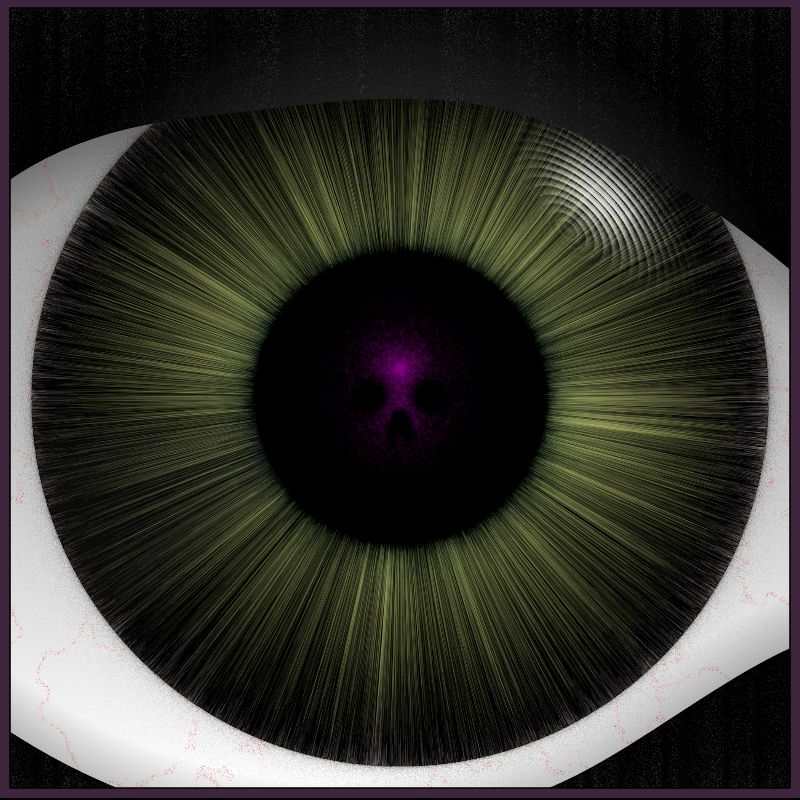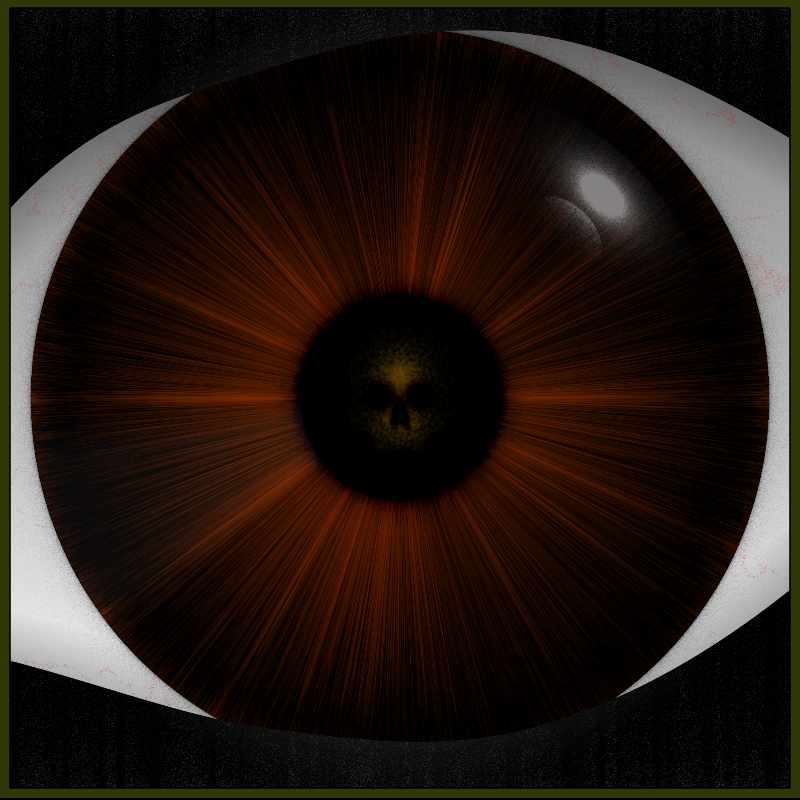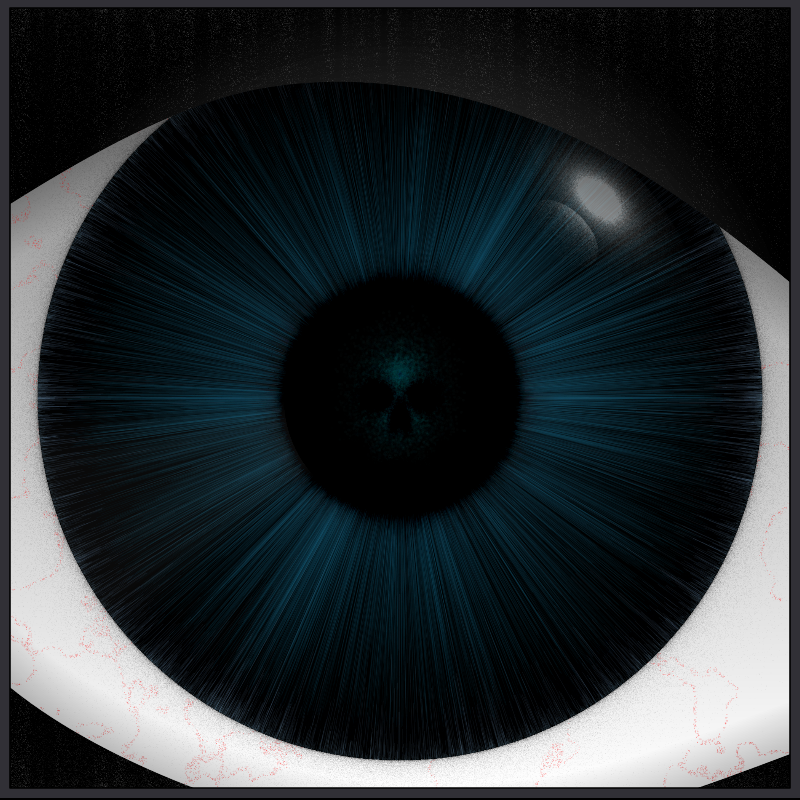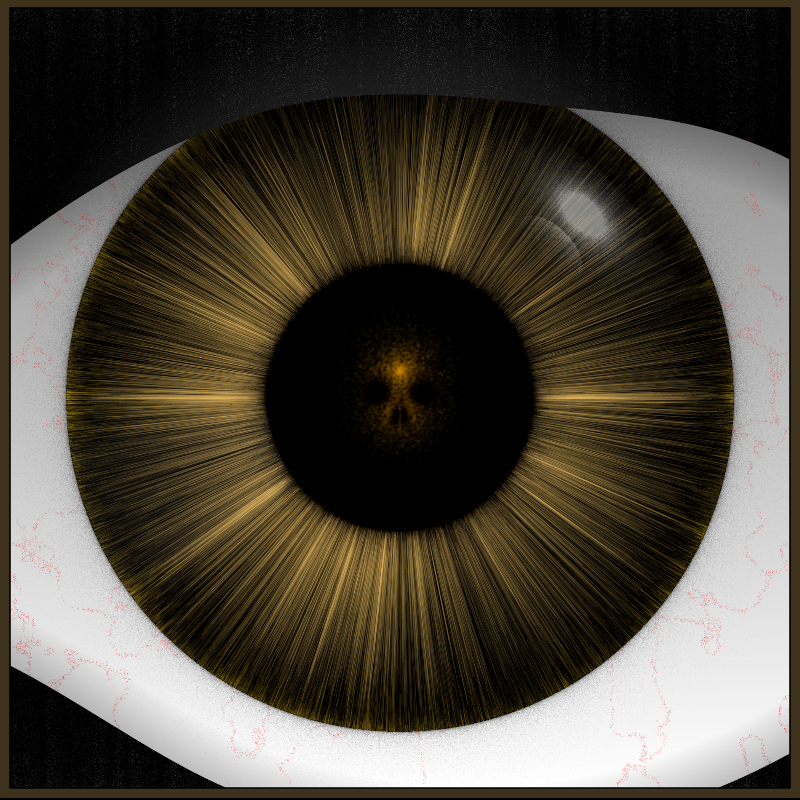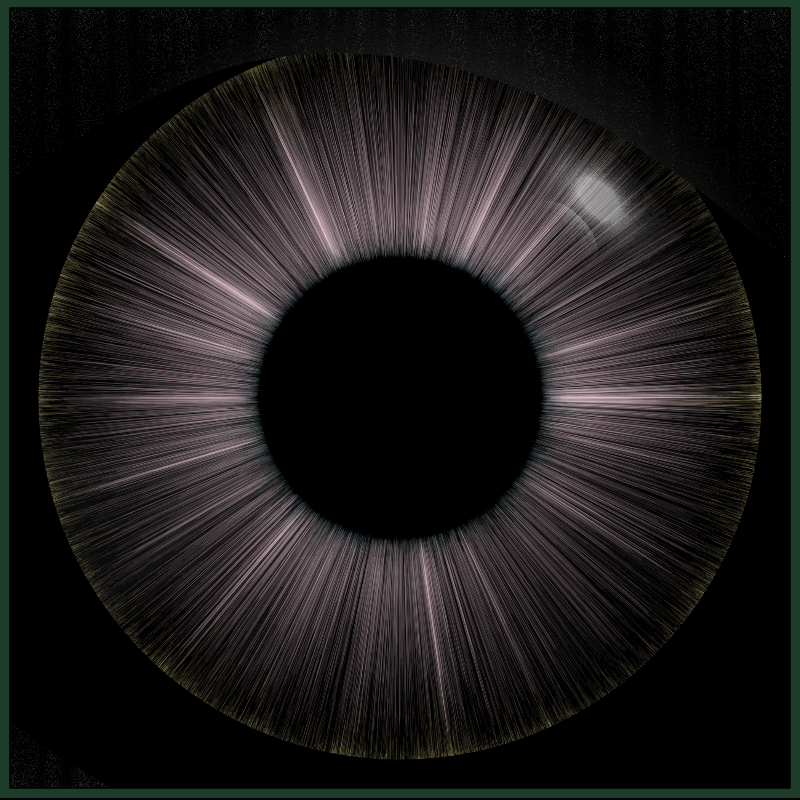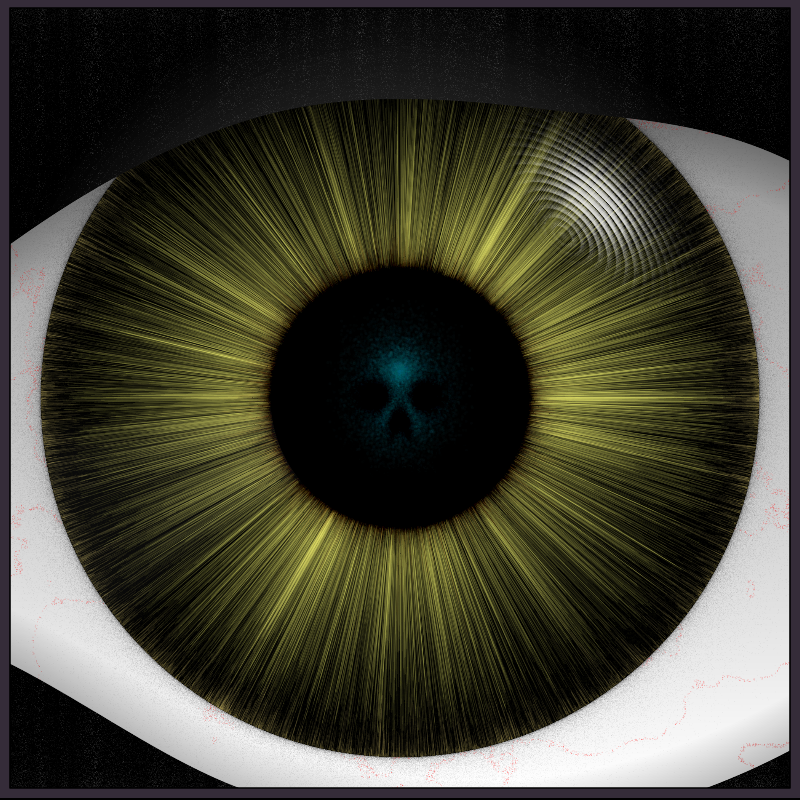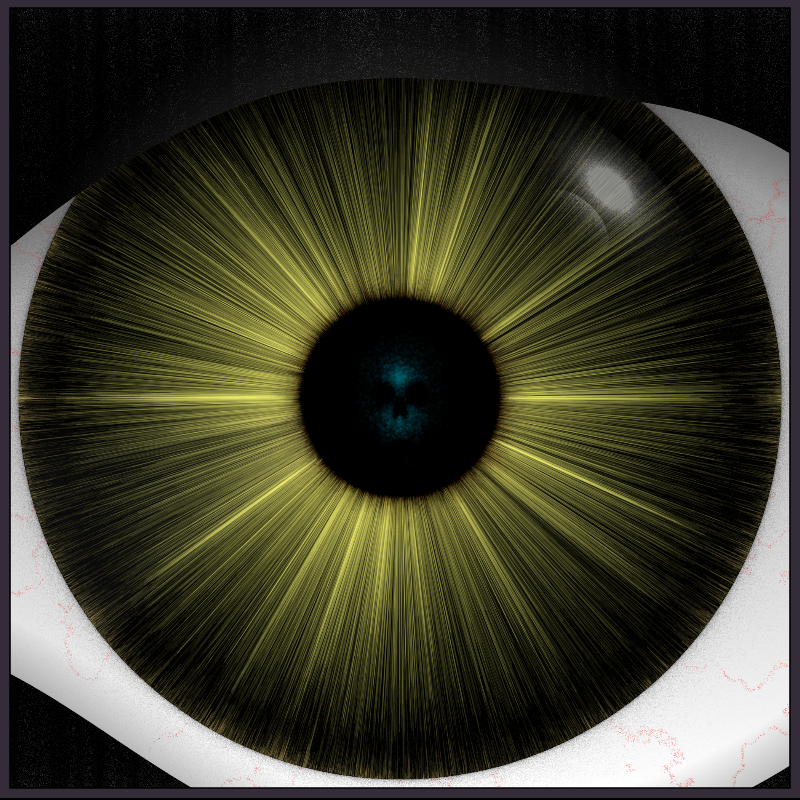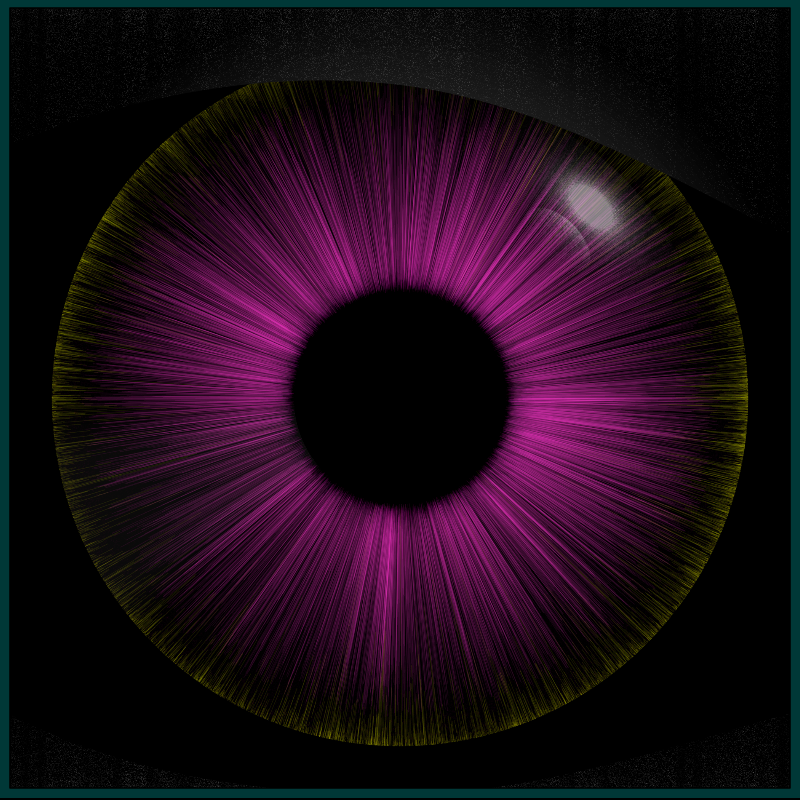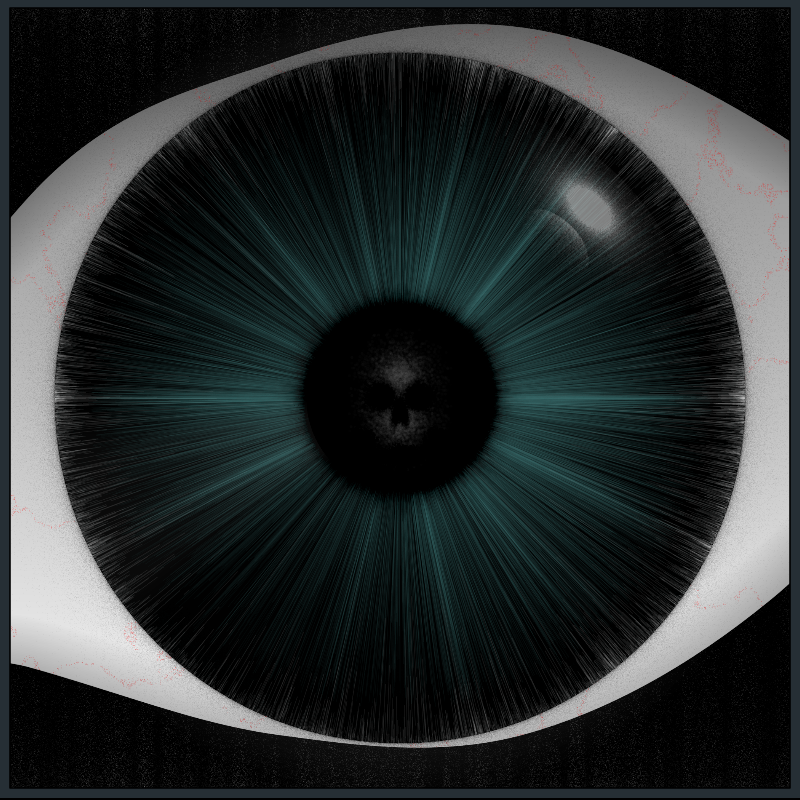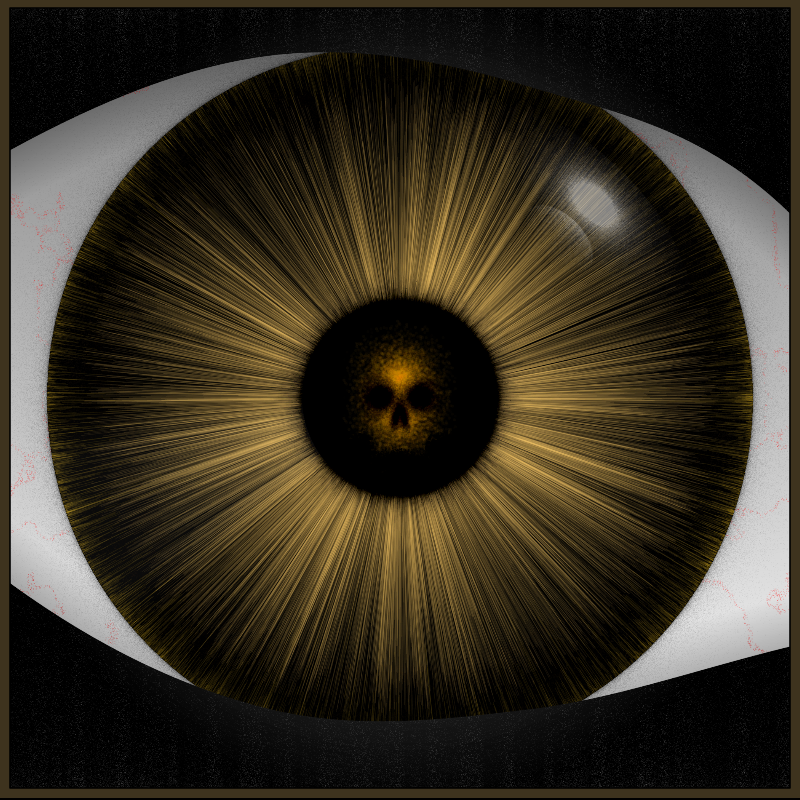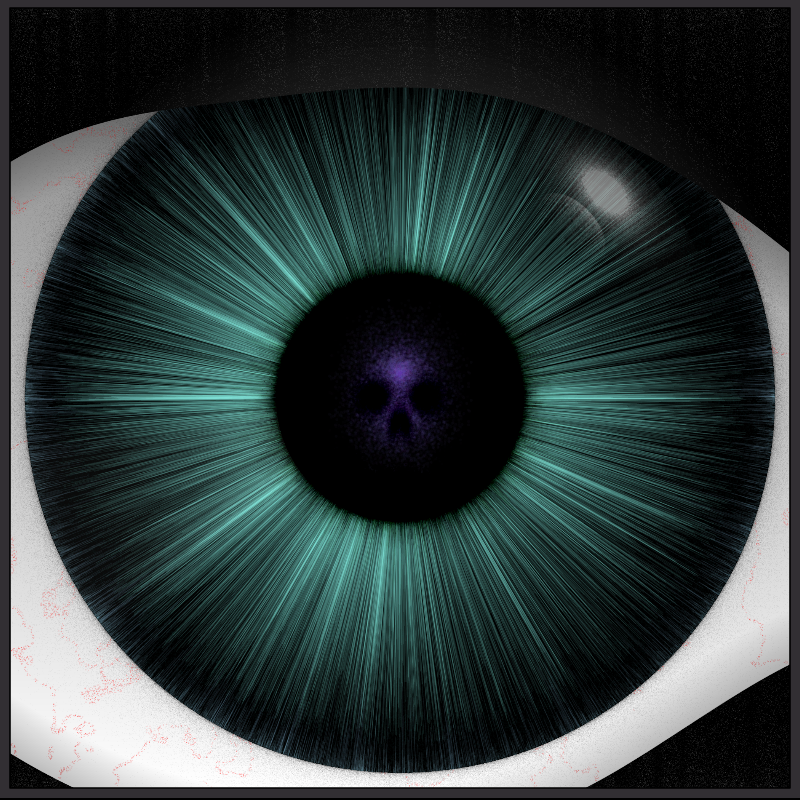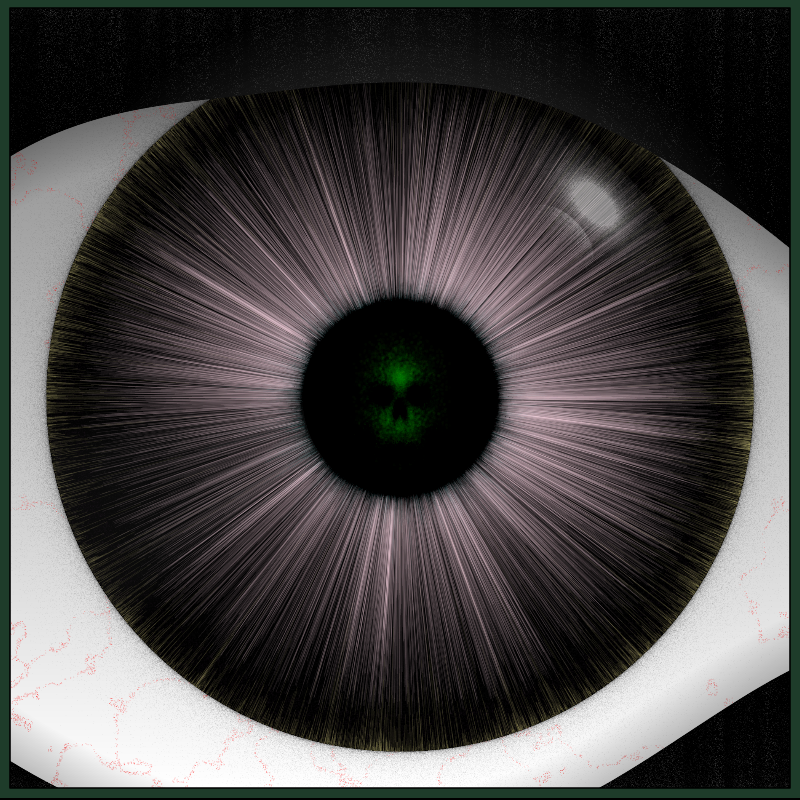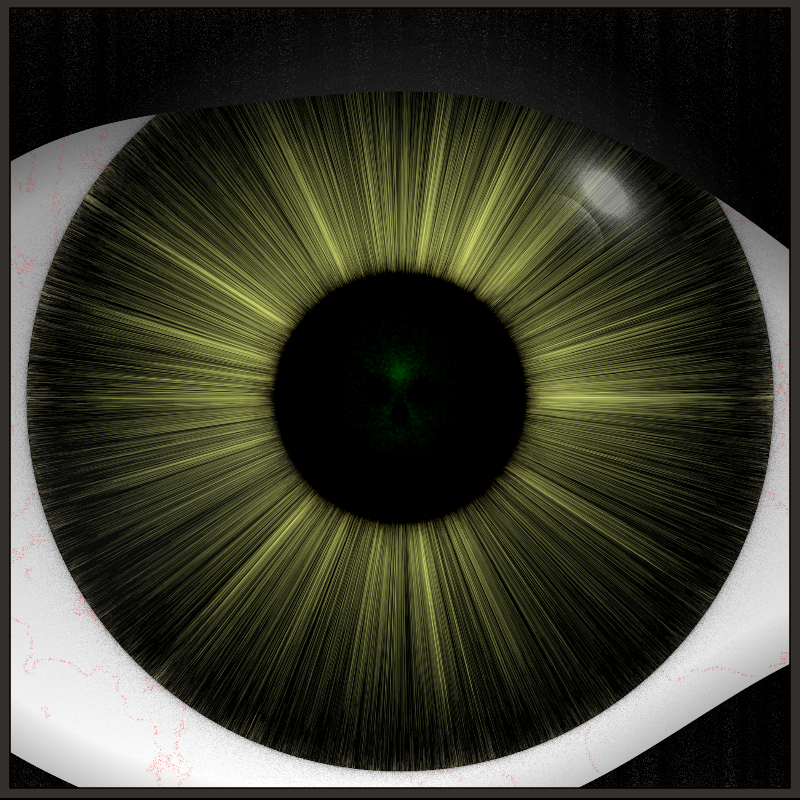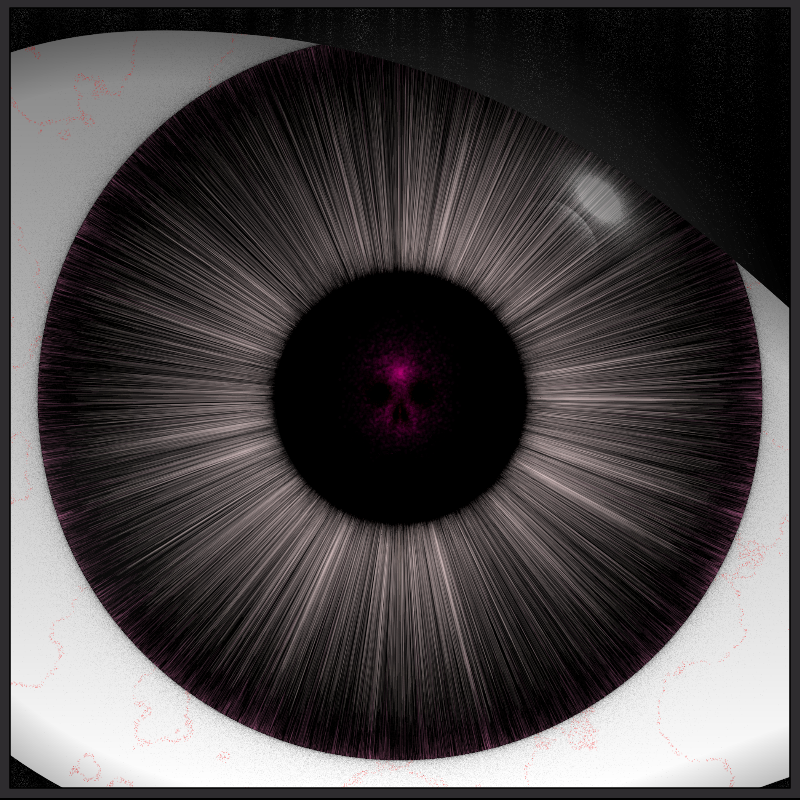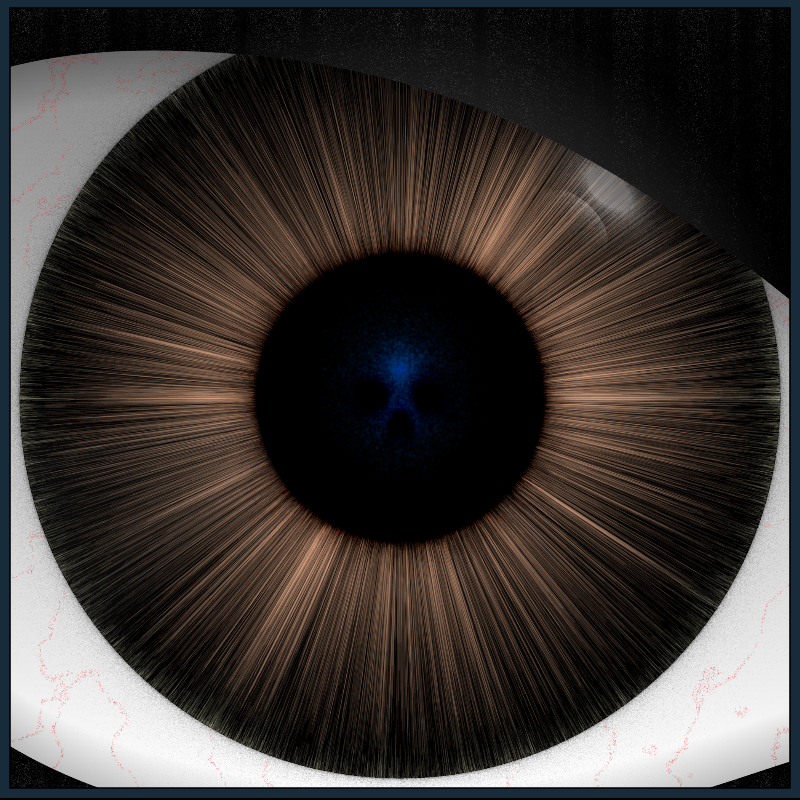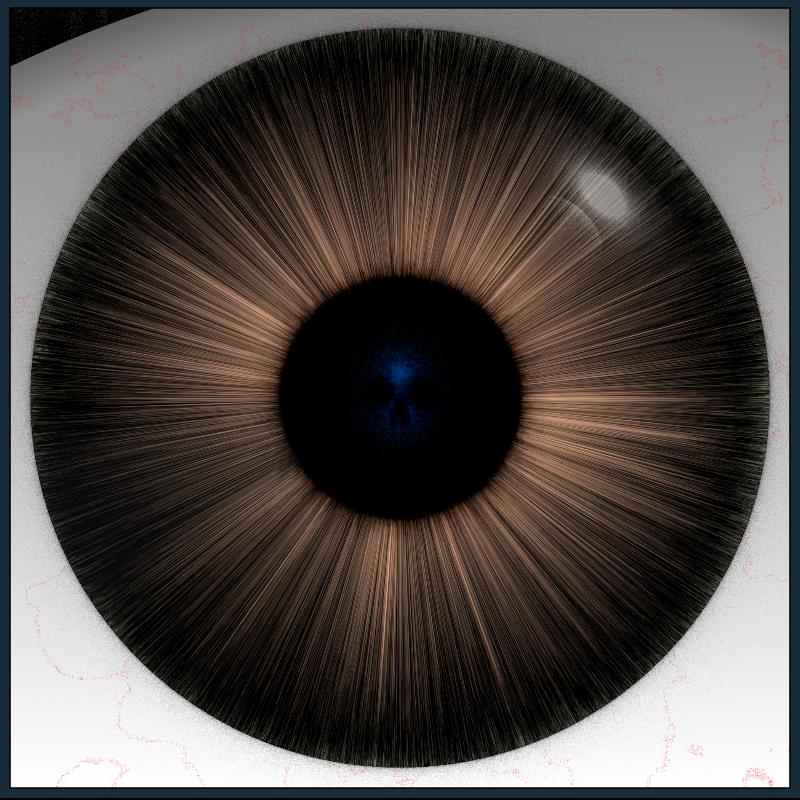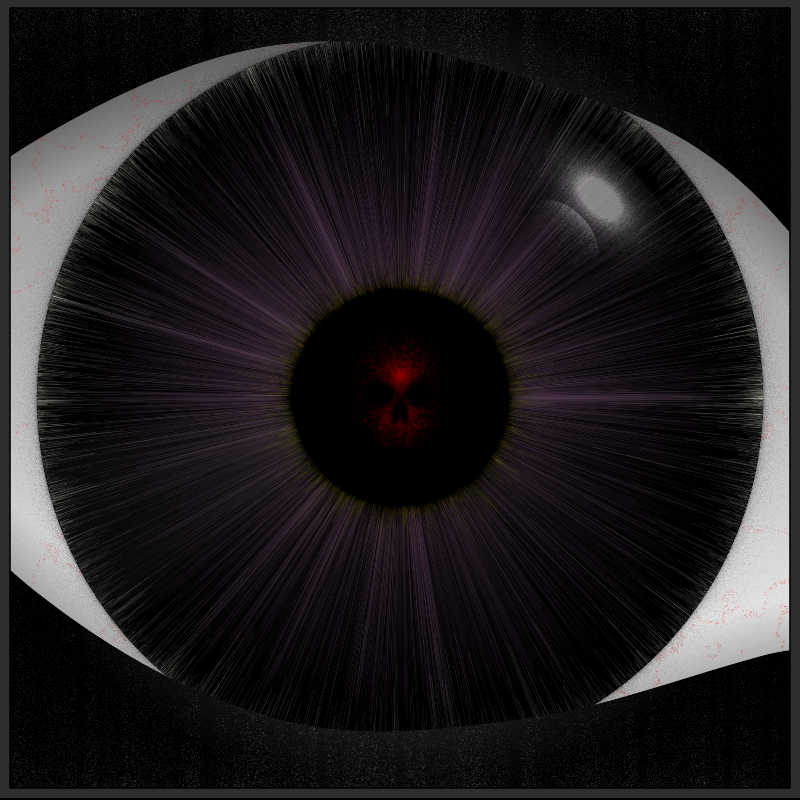Visions of Escher
IPFS
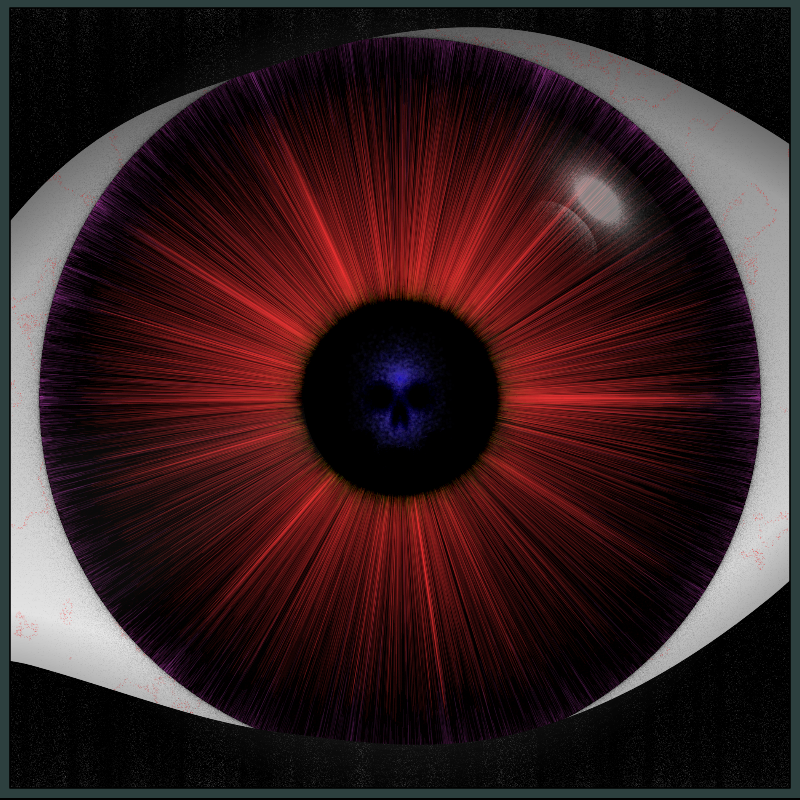
5 May 2022•TEZOS•IPFS
In 1946 the artist M.C. Escher created the mezzotint ‘Eye’, a rendering of his own eye as reflected in an extremely convex mirror. Although he liked the technique, the process of creating each mezzotint was slow, and as a result he only created eight mezzotints over the course of his career.
The image is striking: a highly-detailed rendering of the human eye, complete with reflections, and there, at the centre of the eye, is a skull: a reminder that “we are all confronted with death whether we like it or not”, and a fulfilment of what Escher saw as a need to portray an observer reflected in the convex mirror of the eye.
I decided to recreate ‘Eye’ generatively, my intention being to produce an infinite range of pieces based on Escher's painstakingly-constructed original. The iris, pupil, skull and eyelid are generated using random processes, shaped with the aid of probabilities and limited colour palettes. Layers are built up over a sequence of three hundred and sixty frames. and the skull is formed from a cloud of shaped, random points in the centre of the pupil.
Sizes, colour palettes and striations are all chosen from the initial hash value, and there are a number of rare features to be discovered.
Interactivity is enabled once the piece is clicked on, and layers can be activated or deactivated using the number keys. Press 'I' for more information.
The image is striking: a highly-detailed rendering of the human eye, complete with reflections, and there, at the centre of the eye, is a skull: a reminder that “we are all confronted with death whether we like it or not”, and a fulfilment of what Escher saw as a need to portray an observer reflected in the convex mirror of the eye.
I decided to recreate ‘Eye’ generatively, my intention being to produce an infinite range of pieces based on Escher's painstakingly-constructed original. The iris, pupil, skull and eyelid are generated using random processes, shaped with the aid of probabilities and limited colour palettes. Layers are built up over a sequence of three hundred and sixty frames. and the skull is formed from a cloud of shaped, random points in the centre of the pupil.
Sizes, colour palettes and striations are all chosen from the initial hash value, and there are a number of rare features to be discovered.
Interactivity is enabled once the piece is clicked on, and layers can be activated or deactivated using the number keys. Press 'I' for more information.
128 EDITIONS
•0 RESERVES
minted
78 / 128
dutch auction
1 TEZ
Lorem ipsum project longer longer
0.00001 ETH
Lorem ipsum project longer longer
0.00001 ETH
Lorem ipsum project longer longer
0.00001 ETH
Lorem ipsum project longer longer
0.00001 ETH
Lorem ipsum project longer longer
0.00001 ETH
Lorem ipsum project longer longer
0.00001 ETH
Lorem ipsum project longer longer
0.00001 ETH
Lorem ipsum project longer longer
0.00001 ETH
Lorem ipsum project longer longer
0.00001 ETH
Lorem ipsum project longer longer
0.00001 ETH
Lorem ipsum project longer longer
0.00001 ETH
Lorem ipsum project longer longer
0.00001 ETH
Lorem ipsum project longer longer
0.00001 ETH
Lorem ipsum project longer longer
0.00001 ETH
Lorem ipsum project longer longer
0.00001 ETH
Lorem ipsum project longer longer
0.00001 ETH
Lorem ipsum project longer longer
0.00001 ETH
Lorem ipsum project longer longer
0.00001 ETH
Lorem ipsum project longer longer
0.00001 ETH
Lorem ipsum project longer longer
0.00001 ETH
Lorem ipsum project longer longer
0.00001 ETH
Lorem ipsum project longer longer
0.00001 ETH
Lorem ipsum project longer longer
0.00001 ETH
Lorem ipsum project longer longer
0.00001 ETH
